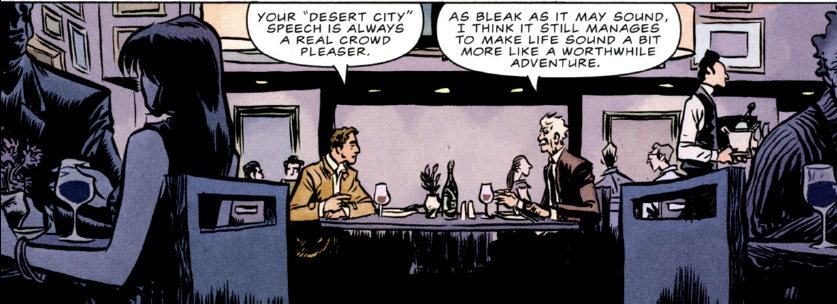 Mirror & Window Books
Mirror & Window Books
Barton, Chris. 2011.
Can I See Your I.D.? True Stories of False Identities. Illustrated by Paul Hoppe. NY: Dial.
Bruchac, Joseph,. 2007.
The Way. Minneapolis, MN: Darby Creek Publishing.
Budhos, Maria. 2011.
Tell Us We're Home. NY: Atheneum.
Collington, Peter. 1994.
The Coming of the Surfman. NY: Knopf.
Gallo, Donald, R. (Ed.). 2007.
First Crossing: Stories about Teen Immigrants. Cambridge, MA: Candlewick Press.
Hidier, Yanuja Desai. 2003.
Born Confused. NY: Scholastic.
Jones, Traci. L. 2006.
Standing Against the Wind. NY: Farrar, Straus & Giroux.
Lee, Marie G. 2001.
Finding My Voice. NY: Harper Trophy.
Myers, Walter Dean & Ross Workman. 2011.
Kick. NY: HarperTeen (Note: Workman is a high school student).
Na, An. 2003.
A Step from Heaven. NY: Speak.
Son, John. 2004.
Finding My Hat. NY: Scholastic.
Thurlo, David & Aimee Thurlo. 2004.
The Spirit Line. NY: Viking.
Veciana-Suarez, Ana. 2002.
Flight to Freedom. NY: Scholastic.
Woodson, Jacquline. 2008.
After Tupac and D Foster. NY: Putnam.
Text to Text
1. Exploring the Essay

Bryson, Bill. 2000.
I'm a Stranger Here Myself: Notes on Returning to America After 20 Years Away. NY: Broadway.
Einstein, Albert, 1950s.
An Ideal Service to Our Fellow Man. This I Believe on NPR.
Grady, Wayne. 2010.
Technology: A Groundwood Guide. Toronto: Groundwood Books.
Heinlan, Robert. 2010.
Our Nobel, Essential Decency. This I Believe Essays as heard on the Bob Edwards show, 3.12.10 on NPR.
Hubbard, Jim. 1994.
Shooting Back from the Reservation: A Photographic View of Life by Native Americans. NY: New Press.

Kidder, Tracey. 2004.
Mountains Beyond Mountains: The Quest of Dr. Paul Farmer, a Man Who Would Cure the World. New York: Random House.
Sullivan, George. 2009.
Berenice Abbott, Photographer: An Independent Vision. NY: Clarion.
Walker, David & Peter Hinks (ed). 1829/2000.
David Walker's Appeal: To the Coloured Citizens of the World. Pennsylvania State University. (Link is for an online source)
2. Exploring the 1960s & Early 1970s

Alvarez, Julia. 2004.
Before We Were Free. NY: Laurel Leaf. (Dominican Republic, 1960-61).
----------------. 2004.
Antes de ser libres. NY: Laurel Leaf. (Dominican Republic, 1960-61).
Brimner, Larry Dane. 2011.
Birmingham Sunday. Honesdale, PA: Boyds Mills Press.
Caputo, Philip. 2005.
10,000 Days of Thunder: A History of the Vietnam War. NY:
Atheneum.
Case, Diana. 1995.
92 Queens Road. NY: Farrar, Straus and Giroux. (South Africa, 1960s).
Compestine, Ying Chang. 2009.
Revolution is Not a Dinner Party. NY: Holt. (China, 1972).
Gallo, Gary. 2010.
Jimi: Sounds Like a Rainbow: the Story of the Young Jimi Hendrix. Illustrated by Javaka Steptoe. NY: Clarion.
Glass, Linzi. 2006.
The Year the Gypsies Came. NY: Henry Holt. (South Africa during the 1960s).
Gonzalez, Christina. 2010.
The Red Umbrella. NY: Knopf Books.

Hill, Laban Carrick. 2007.
America Dreaming: How Youth Changed America in the 60s. NY: Little Brown.
Kaufman, Michael. 2009.
1968. New Milford, CT: Roaring Brook Press.
Magoon, Kekla. 2010.
The Rock and the River. NY: Collins.
McWhorter, Diane. 2004.
A Dream of Freedom: the Civil Rights Movement from 1954 to 1968. NY: Scholastic.
Mills, Kay, 1994.
This Little Light of Mine: The Life of Fannie Lou Hamer. NY: Plume.
Myers, Walter Dean. 1994.
Malcolm X: By Any Means Necessary. NY: Scholastic.
Stokes, John, Herman Viola and Lois Wolfe. 2007.
Students on Strike: Jim Crow, Civil Rights, Brown, and Me. Illustrated with Photographs
. Washington DC: National Geographic Children’s Books.
Wiles, Deborah. 2010.
Countdown. NY: Scholastic Press.
Williams-Garcia. Rita. 2010.
One Crazy Summer. NY: Amistad.
Text to World
Bagdasarian, Adam. 2000.
Forgotten Fire. NY: Dorling Kindersley.
Badoe, Adwoa. 2010.
Between Sisters. Toronto: Groundwood Books.
Budhos, Marina. 2007.
Remix: Conversations with Immigrant Teenagers. New York: Henry Holt/Resource Publications.
Carmi, Daniella. 2000.
Samir and Yonatan. Translated by Yael Lotan. NY: Arthur A. Levine Books.
Combres, Elisabeth. 2011.
Broken Memory: A Novel of Rwanda. Toronto: Groundwood Books.
Engle, Margarita. 2011.
Hurricane Dancers: The First Caribbean Pirate Shipwreck. NY: Henry Holt.
Guibert, Emmanuel. 2009.
The Photographer: Into War-torn Afghanistan with Doctors Without Borders. Photographs by Lefevre. NY: FirstSecond.
Kass, Pnina Moed. 2006.
Real Time. NY: Graphia.
Kuklin, Susan. 1996.
Irrepressible Spirit: Conversations with Human Rights Activists. New York: Putnam.
Marston, Elsa. 2005.
Figs and Fate: About Growing Up in the Arab World Today. NY: George Braziller.
Oodgeroo. 1994.
Dreamtime: Aboriginal Stories. Illustrated by Bronwyn Bancroft. NY: Lothrop, Lee, and Shepard.
Exploring Other: Science Fiction & Fantasy

Abbott, Ellen Jensen. 2009.
Watersmeet. Tarrytown, NY: Marshall Cavendish.
Allende, Isabel. 2006.
Kingdom of the Golden Dragon. NY: Rayo.
------------------. 2004. El Reino del Dragon de Oro. NY: Rayo.
Allende, Isabel. 2004.
Forest of the Pygmies. NY: Rayo.
------------------. 2005. El Bosque de los Pigmeos. NY: Rayo.
Allende, Isabel. 2009.
City of Beasts. NY: Harper Perennial.
-------------------. 2003.
La Ciudad de las Bestias. NY: Rayo.
Bruchac, Joseph. 2011.
Wolf Mark. NY: Tu Books/Lee & Low. (Will be published in Fall, 2011).
-------------------. 2007.
Wabi: A Hero's Tale. NY: Speak.
Fishbone, Greg, 2011.
Galaxy Games: The Challengers. NY: Tu Books/Lee & Low. (Will be published in Fall, 2011).
Gill, David Macinnis. 2009.
Soul Enchilada. NY: Harper Collins.
Pon, Cindy. 2009.
Silver Phoenix: Beyond the Kingdom of Xia. NY: Greenwillow Books.
Sandler, Karen. 2011.
Tankborn. NY: Tu Books/Lee & Low. (Will be published in Fall, 2011).
Smith, Cynthia Leitich. 2011.
Blessed. Cambridge, MA: Candlewick Press.
----------------------------. 2010.
Eternal. Cambridge, MA: Candlewick Press.
---------------------------. 2007.
Tantalize. Cambridge, MA: Candlewick Press.
Tolkien, J.R.R. 1986.
The Hobbit. NY: Ballantine.
So Much to See: Image and Text
Carlson, Lori Marie. (Ed.). 2005.
Red Hot Salsa: Bilingual Poems on Being Young and Latino in the United States. New York: Henry Holt and Company.
Feelings, Tom. 1995.
The Middle Passage: White Ships/Black Cargo. New York: Dial.
Grandits, John. 2007.
Blue Lipstick: Concrete Poems. NY: Clarion.
Igus, Toyomi.1998.
i see the rhythm. Illustrated by Michele Wood. San Francisco: Children's Book Press.
Nye, Naomi Shihab. 2002.
19 Varieties of Gazelle: Poems of the Middle East. Greenwillow Books/ HarperCollins.
Soto, Gary. 2006.
A Fire in My Hands: Revised and Expanded Edition. San Diego, CA: Harcourt.
Volakova, Hana. 1994.
I Never Saw Another Butterfly. NY: Schocken.
 Wonderings...
Wonderings...
Alvarez, Julia. 2006.
Finding Miracles. New York: Laurel Leaf.
Anderson, M.T. 2006.
The Astonishing Life of Octavia Nothing, Traitor to the Nation, Vol. 1: The Pox Party. Cambridge, MA: Candlewick Press.
Cart, Michael. 2006.
Necessary Noise: Stories About Our Families as They Really Are. Illustrated by Charlotte Noruzi. NY: HarperTeen.
Chassman, Gary. 2002.
In the Spirit of Martin: The Living Legacy of Dr. Martin Luther King Jr. NY: Tinwood Books.
Haddix, Margaret Petersen. 2007.
Uprising. NY: Simon & Schuster.
Laird, Elizabeth & Nimr, Sonia. 2006.
A Little Piece of Ground. Illustrated by Bill Neal. Chicago, IL: Haymarket Books.
Lawrence, Jerome and Lee Robert E. 2007.
Inherit the Wind. NY: Ballantine Books.
Myers, Walter Dean. 2010.
Lockdown. NY: Amistad.
Saenz, Benjamin Alire. 2011.
Sammy and Juliana in Hollywood. El Paso, TX: Cinco Puntos Press.
Determining Importance

Atkin, S. Beth. 2000.
Voices from the Field: Children of Migrant Farmworkers Tell Their Stories. New York: Little Brown Young Readers.
Bartoletti, Susan Campbell. 2010.
They Called Themselves the K.K.K.: The Birth of an American Terrorist Group. NY: Houghton Mifflin.
Bial, Raymond. 2002.
Tenement Life on the Lower East Side. Boston: Houghton Mifflin.
Grainfield, Linda. 2001.
97 Orchard Street, New York: Stories of Immigrant Life. Illustrated by Arlene Alda. Toronto, Ontario: Tundra Books.
Higgins, Dalton. 2010.
Hip Hop World: Groundwood Series. Toronto: Groundwood Books.
Herrera, Nicholas. 2011.
High Riders, Saints and Death Cars: A Life Saved by Art. Illustrated by John T. Deene. Toronto: Groundwood Books.
Myers, Walter Dean. 2009.
Riot. NY: Egmont USA.
Ziegelman, Jane. 2010.
97 Orchard: An Edible History of Five Immigrant Families in One New York Tenement. NY: HarperCollins.
Synthesis

Aronson, Marc & Marina Budhos. 2010.
Sugar Changed the World: A Story of Magic, Spice, Slavery, Freedom and Science. NY: Clarion.
Bryant, Jennifer. 2007.
Pieces of Georgia: A Novel. NY: Yearling.
Danticat, Edwidge. 2003.
Behind the Mountains. New York: Scholastic.
Gaskins, Paul Fuyo (Ed.). 1999.
What Are You? Voices of Mixed-Race Young People. New York: Henry Holt.
Haworth-Attard, Barabra. 2005.
Theories of Relativity. NY: Holt.
Rushdie, Salman. 1990.
Haroun and the Sea of Stories. New York: Penguin.
Sheth, Kashmira. 2009.
Keeping Corner. NY: Hyperion.
Staples, Suzanne Fisher. 2005.
Under the Persimmon Tree. Frances Foster Books/Farrar, Straus and Giroux.
Steinbeck, John. 2002.
Of Mice and Men (Centennial Edition). New York: Penguin.
Williams-Garcia, Rita. 2010.
Jumped. NY: Amistad.
Zusak, Markus. 2007.
The Book Thief. NY: Knopf Books for Young Readers.

































